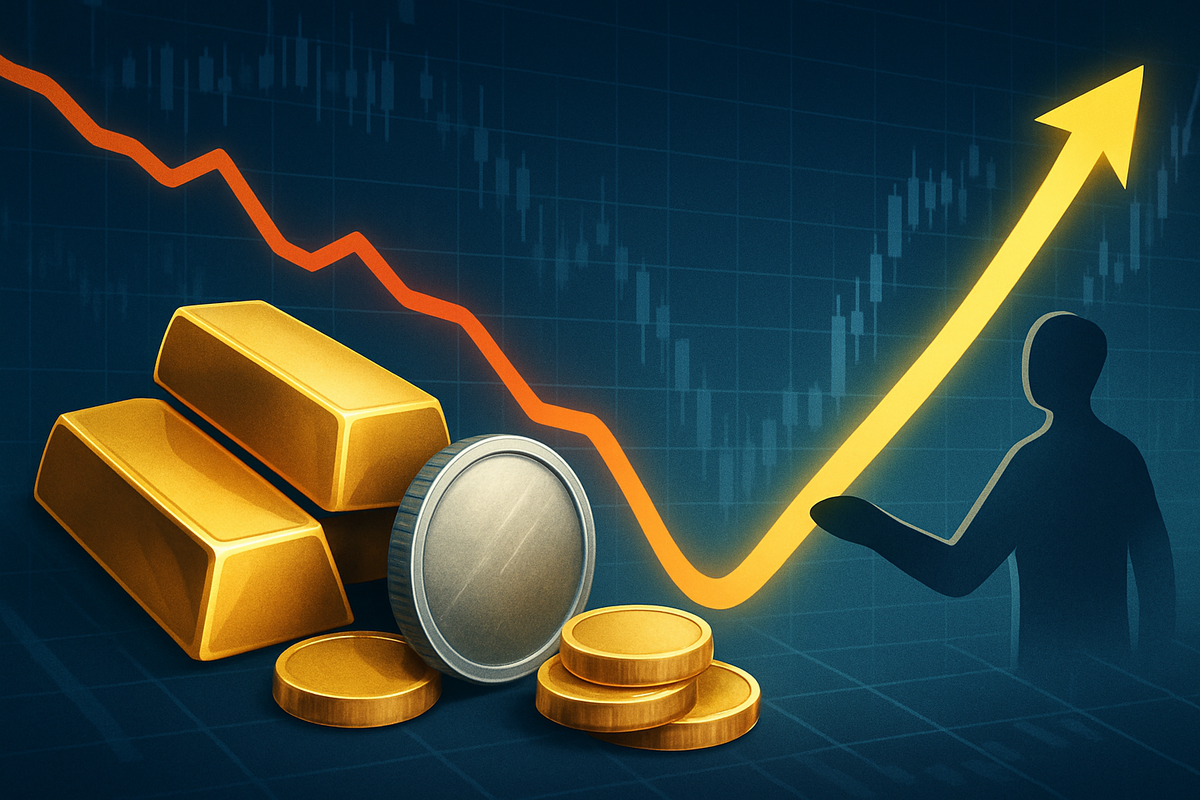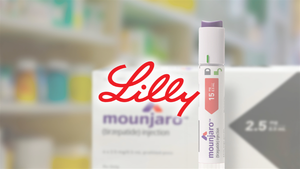
The precious metals market has recently witnessed a dramatic display of volatility, with gold and silver futures experiencing a sharp sell-off from their unprecedented highs, only to stage a resilient rebound driven by aggressive value buying. This significant price action, unfolding between October 20 and October 23, 2025, has sent ripples through financial markets, prompting investors and analysts to reassess the short-term dynamics and long-term trajectory of these critical safe-haven assets. The immediate implications point to a market in flux, where underlying bullish sentiment contends with profit-taking pressures and evolving global economic narratives.
The swift correction, which saw gold plummet over 6% in a single day—its largest daily drop in over a decade—and silver experience an even more pronounced two-day plunge, initially sparked concerns of a broader market reversal. However, the subsequent recovery, fueled by traders capitalizing on lower price points, suggests a robust underlying demand. This event underscores the precious metals' dual role as both hedges against inflation and uncertainty, and as highly liquid assets susceptible to rapid shifts in market sentiment and technical adjustments.
A Turbulent Week: From Record Highs to Sharp Corrections and Recovery
The period leading up to the sell-off saw both gold and silver futures ascend to unprecedented nominal highs. Gold futures on the Comex (CMX) had surged over 60% since the start of 2025, breaching the $4,000 per ounce barrier and reaching an all-time peak of approximately $4,398 per ounce on Monday, October 20. Similarly, silver futures, which had outperformed gold with roughly 90% gains year-to-date, hit a record high of $54.3775 per ounce in mid-October. On the Multi Commodity Exchange (MCX), gold closed at ₹1,30,624 per 10 grams on October 20, with silver at ₹1,57,987 per kilogram.
However, this spectacular rally was abruptly interrupted. On Friday, October 17, silver markets experienced their most dramatic single-session decline in six months, plummeting over 6% to $50.96 per ounce. The full force of the sell-off hit between October 21 and October 22. Gold prices fell by the most in over a decade on Tuesday, October 21, with spot gold hitting as low as $4,090.97 per ounce—a nearly $300 fall from its all-time high. US gold futures saw a 5.4% decline in New York, trading around $4,100 per ounce, and closing at $4,109.10 on Comex, down 5.74%. Silver plunged over 10% on October 21, its worst performance since February 2021, settling around $48-$49 per ounce. By Wednesday, October 22, MCX gold futures had dipped by ₹6,414 or 5% to ₹1,21,857 per 10 grams, and silver by ₹4,769 or 3.17% to ₹1,45,558 per kilogram.
The correction was largely attributed to intensified profit-taking after the metals entered technically overbought conditions. A strengthening US dollar, easing geopolitical tensions (particularly hopes of cooling trade tensions between the US and China), and a perceived shift back to riskier assets also contributed to the decline. Analysts widely viewed this as a "healthy" and "long-overdue correction" after a prolonged rally. The rebound commenced swiftly, with gold and silver futures recovering significantly on Thursday, October 23. Gold futures for December delivery on the MCX increased by ₹1,800 or 1.48% to ₹1,23,657 per 10 grams, while Comex gold added $73.44 or 1.81% to $4,138.84 per ounce. Silver futures also surged, rising ₹2,727 or 1.87% to ₹1,48,285 per kilogram on the MCX, and 0.89% to $48.10 an ounce on Comex. This rapid recovery was explicitly driven by "value buying," as traders perceived the corrected prices as an opportune moment to re-enter the market, capitalizing on the temporary dip amidst easing global tensions and improving risk sentiment.
Companies Navigating the Volatility: Winners and Losers
The recent gyrations in gold and silver futures have created a dynamic environment for public companies, with clear winners and losers emerging based on their operational structures and exposure to precious metals.
Mining companies are at the forefront of this impact. Major gold producers like Newmont (NYSE: NEM, TSX: NGT), Barrick Gold Corporation (NYSE: GOLD, TSX: ABX), and Agnico Eagle Mines (NYSE: AEM, TSX: AEM), as well as silver-focused miners such as Pan American Silver Corp. (NASDAQ: PAAS) and First Majestic Silver Corp. (NYSE: AG), stand to gain significantly from a sustained rebound. Their revenues and profitability are directly tied to commodity prices, and higher prices translate to fatter profit margins due to operating leverage. Conversely, mining companies with higher "all-in sustaining costs" (AISC) or substantial debt, like Coeur Mining Inc. (NYSE: CDE), face increased pressure during price drops, as their margins are squeezed. Junior mining companies, which rely heavily on external financing for exploration, are also vulnerable to sustained price volatility, which can deter investors.
Precious metals royalty and streaming companies such as Wheaton Precious Metals Corp. (NYSE: WPM), Royal Gold Inc. (NASDAQ: RGLD), and Franco-Nevada Corporation (TSX: FNV) are positioned as relative winners. These firms provide upfront financing to miners in exchange for future production at a fixed, low price. They benefit from rising commodity prices without bearing the direct operational risks and costs of mining, offering a lower-risk exposure to price appreciation. Their business model inherently hedges against the operational challenges faced by pure mining companies.
Precious metals investment funds (ETFs), particularly those backed by physical holdings, directly reflect the market's movements. SPDR Gold Shares (NYSEARCA: GLD) and iShares Silver Trust (NYSEARCA: SLV) are direct beneficiaries of a price rebound, as their net asset value rises with the underlying commodity. However, they also experience significant outflows during sharp declines, impacting their assets under management. The stock performance of mining companies and ETFs is highly correlated with commodity prices, meaning a strong rebound can lead to amplified stock price appreciation, while sustained volatility can induce investor caution and stock depreciation. For industrial users of silver, such as manufacturers in solar panels, electric vehicles, and electronics, a strong rebound could translate to higher input costs, potentially impacting their profitability and competitiveness if not managed through hedging or alternative material research.
Wider Significance: A Barometer of Global Uncertainty
The recent gold and silver futures volatility and rebound around October 20-23, 2025, serve as a potent barometer for broader industry trends and global economic sentiment. This event reinforces the role of precious metals as a crucial safe-haven asset, especially amidst persistent macroeconomic uncertainties and geopolitical flux.
The sell-off and subsequent recovery fit into a broader trend of increased central bank accumulation of gold, signaling de-dollarization efforts and a strategic pivot towards more diversified, asset-backed reserves globally. Silver's market dynamics are uniquely influenced by its dual identity as both a monetary metal and a critical industrial commodity. Robust industrial demand from burgeoning green technologies like solar energy and electric vehicles provides a structural floor for silver prices, even as its smaller market size and lower liquidity amplify price swings compared to gold. The period of volatility also highlights the rapid shifts between "risk-off" and "risk-on" investment environments, where perceived improvements in global sentiment can temporarily diminish safe-haven demand, only for underlying anxieties to bring investors back.
Ripple effects extend across the financial ecosystem. Mining companies, as discussed, experience direct impacts on their profitability and operational strategies. Jewelry retailers face fluctuating material costs, affecting consumer prices and profit margins. Investors in precious metals ETFs see their portfolios directly correlated to these price movements, while the broader financial market often interprets precious metals' erratic behavior as signals of deeper anxieties within the global system, potentially diverting capital flows from other asset classes. Regulatory bodies like the Commodity Futures Trading Commission (CFTC) and London Bullion Market Association (LBMA) are likely to intensify scrutiny during periods of extreme volatility, potentially leading to enhanced market oversight and risk management protocols to prevent speculative excesses.
Historically, such volatility is not unprecedented. The 1970s and 1980s saw gold prices skyrocket amidst high inflation, including the "Nixon Shock" and the infamous "Silver Corner" by the Hunt Brothers in 1980, which demonstrated the market's vulnerability to manipulation. The 2008 Global Financial Crisis saw precious metals initially crash due to liquidity concerns, then rebound spectacularly as investors sought refuge. More recently, the April 2013 gold crash and the COVID-19 pandemic in 2020 also showcased rapid price swings. These historical precedents confirm that while precious metals offer stability and a hedge, they are inherently dynamic and influenced by a complex interplay of economic indicators, geopolitical developments, and monetary policies.
What Comes Next: Navigating Continued Dynamism
Looking ahead, the precious metals market is poised for continued dynamism, with both short-term volatility and a broadly bullish long-term outlook. In the short term (late 2025 - early 2026), gold is expected to consolidate around the $4,000-$4,100 per ounce range, with silver targeting $50-$55 per ounce. Key drivers will be upcoming US inflation data, central bank interest rate decisions (with further Fed rate cuts anticipated), and evolving geopolitical landscapes. A stronger US dollar or easing tensions could exert downward pressure, while persistent uncertainties could provide renewed impetus.
Long-term (2026 and beyond), the outlook remains robustly bullish. Aggressive forecasts for gold range from $5,000 to $10,000 per ounce by 2030, with silver potentially outperforming gold and exceeding $100 to $200 or higher by 2030-2035. These projections are underpinned by persistent geopolitical risks, sustained central bank gold accumulation (driven by de-dollarization trends), ongoing economic uncertainties, and the metals' enduring role as inflation hedges. The structural trend of higher central bank buying is expected to continue into 2025 and 2026, and J.P. Morgan Research (NYSE: JPM) forecasts gold to average $3,675/oz by Q4 2025, viewing it as an optimal hedge against stagflation, recession, and policy risks.
Strategic pivots for market participants include emphasizing diversification within precious metals portfolios, employing dollar-cost averaging to mitigate price swings, and implementing robust risk management strategies to navigate volatility. Mining companies will need to balance efficient production increases during high-price periods with stringent cost control during corrections. Opportunities abound in the increasing demand from emerging markets and the robust industrial demand for silver from green technologies. However, challenges include heightened volatility, potential supply chain issues, and the declining liquidity of paper markets, which could lead to more pronounced price discovery based on physical supply and demand. Potential scenarios range from a continued bull market with healthy corrections to an aggressive bull market if global tensions escalate or economic downturns deepen into stagflation.
Wrap-Up: Resilience Amidst Uncertainty
The recent volatility and rebound in gold and silver futures between October 20-23, 2025, serve as a powerful reminder of the precious metals market's inherent dynamism and resilience. The swift sell-off, driven by profit-taking and technical adjustments, was met with an equally robust rebound fueled by value buying, underscoring the strong underlying demand for these assets as hedges against global uncertainty. Key takeaways include the market's ability to absorb significant corrections, the continued strength of central bank purchases, and the persistent investor appetite for safe havens.
Moving forward, the market is expected to remain volatile in the short term, but the long-term outlook for both gold and silver remains predominantly bullish. Gold is anticipated to consolidate and potentially retest higher levels, while silver, supported by strong industrial demand and its relative undervaluation, may see even more significant percentage gains. This event reinforces the critical role of precious metals in diversified portfolios, offering protection against inflation, currency debasement, and geopolitical instability.
Investors should adopt a disciplined approach, focusing on long-term hedging rather than chasing short-term spikes. Gradual accumulation on dips and robust risk management strategies are crucial. Key indicators to watch in the coming months include central bank monetary policy decisions (especially interest rate adjustments), critical economic data (inflation reports, GDP figures), evolving geopolitical developments (trade tensions, conflicts), US dollar movements, and bond yields. For silver, specifically, monitoring industrial demand from green energy and electronics sectors will be vital. Tracking central bank gold purchases and ETF flows will also provide insights into institutional sentiment and demand, guiding investors through the expected continued dynamism in the precious metals sector.
This content is intended for informational purposes only and is not financial advice






